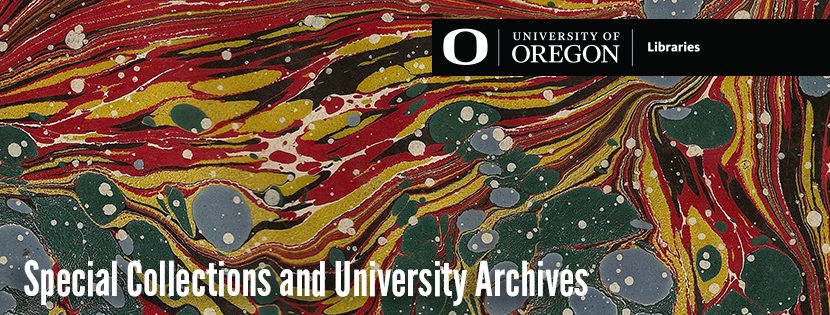Three Cheers! Announcing the Winners of Our Undergraduate Poetry Contest

We are delighted to share the results of our recent Undergraduate Poetry Contest, where creativity, insight, and eloquence converged in a dazzling display of poetic talent. After careful consideration by our awards committee, we are proud to announce two winners whose works stood out for their originality, emotional depth, and linguistic sensibility.
Danielle Richard – ” YOU MAKE ME WANT TO CRASH MY CAR”
Danielle Richard is a third-year English student at the University of Oregon, where she also minors in Arabic Language and Creative Writing. Over the past year, Danielle has participated in the Walter and Nancy Kidd Creative Writing Program, where she earned second place in the Walter and Nancy Kidd Memorial Writing Competition for “YOU MAKE ME WANT TO CRASH MY CAR”, the same piece for which she is being celebrated here. Additionally, she won first place for poetry at the Undergraduate Research Symposium at the University of Oregon.
Danielle’s work has been featured in the *=Unbound Journal, a student literary publication at UO. Beyond her academic achievements, she actively contributes to the university community through her leadership roles in three clubs: Unbound Journal, Oregon Voice Magazine, and J-Street UOregon.
Originally from Tallahassee, Florida—a city she deeply cherishes and often draws inspiration from—Danielle began writing seriously in sixth grade. Her passion for poetry has been a constant throughout high school and college, serving as a tool for understanding and exploring the world.
Looking ahead, Danielle is considering pursuing a master of fine arts in poetry and aims to work in editing and publishing after graduating from the University of Oregon, all while continuing to refine her craft.
Danielle will receive a prize of $500 and have her poem featured in Verse Weavers, a journal published by the Oregon Poetry Association.
YOU MAKE ME WANT TO CRASH MY CAR
So it is not the season for deer
with new antlers after all.
The fawns have grown
out of their spots and their mothers
have found new lovers and I
have prayed but time does not
pass for me and I fall
asleep in the back room at work.
Traffic is fine.
And by that I mean I hate you
until I am alone in the doctor’s office
and I want someone
to rub my back.
I know weeks from now, the bucks
will rub heads bloody, chafing
at branches and peeling velvet skin from
new alabaster bone.
In the waiting room, the fluorescents
are a headache. The nurse comes in
but she does not call my name.
Ryan Kovatch – “mantra”
Ryan Kovatch is a poet from Portland, Oregon. He is currently an undergraduate participating in the University of Oregon’s Walter and Nancy Kidd Creative Writing Workshops. In 2023, his poem “12:00, 12:00, 12:00” won the second place prize in the Walter and Nancy Kidd Creative Writing Competition for poetry, and was described by American poet Kate Daniels as “a deeply imaginative poem that creatively transforms the quotidian task of baking a cake from a boxed mix into a metaphor of quixotic life.” His work has appeared in the Robert D. Clark Honors College creative arts journal Ephemera as well as the Literary Arts Writers in the Schools anthology. Kovatch’s poetry primarily centers on how love and grief interact in queer relationships, making extensive use of direct address and internal rhyme throughout his writing. Also a scholar of computer science, mathematics, and cognitive sciences, he is interested in the ways that languages work to convey logic and meaning, and how we can apply language creatively across disciplines.
Ryan will receive a prize of $500 and have her poem featured in Verse Weavers, a journal published by the Oregon Poetry Association.
mantra
there is no generally accepted definition of mantra. it captures centuries of word-repeating, history repeating. i’m practicing repeating the shape of your name, our names together, our names repeating. my sinister dreaming. i turn in my bed and find the shape of your leaving, your leaving repeating, my sweating and breathing. i’m practicing breathing. i’m saying your name and it sounds like i’m heaving. i gnaw on the letters like an infant who’s teething, hunched over the bowl, keeled over with feeling. letters you wrote that i pinned to the ceiling, your words i’m repeating. call it insanity or fanatic believing, with either i’m kneeling and praying and pleading. the pins that i’m pulling, the love i’m undoing, none of it stops the sound or the bleeding, and no matter the mantra, no matter the phrasing, it’s you i’m repeating, elusive the meaning.
A Round of Applause
We extend our heartfelt congratulations to both Danielle and Ryan for their striking work.
We would also like to thank all the participants for their hard work and creative energy. Each entry was a testament to the vibrant and dynamic nature of contemporary poetry, and we are grateful to have had the opportunity to engage with such a wide range of voices.









